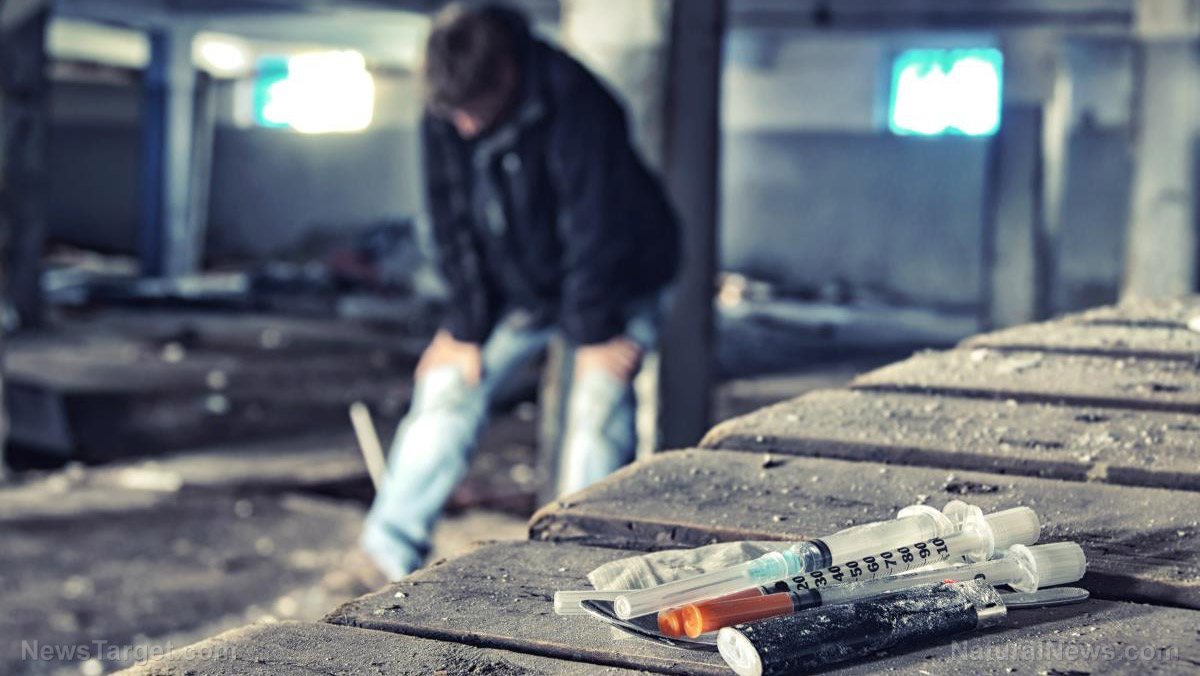
Data from the Centers for Disease Control and Prevention (CDC) has revealed that drug overdose killed the equivalent of a large plane full of Americans every other day in 2022.
Citing reporting delays, officials believe the final count could be around 109,680, which would be a record high. The figures represent a plateau from the previous year when 109,197 overdose deaths were recorded.
The White House said it's a sign that America is closer to "beating" the drug crisis. But health experts were more skeptical, with one scientist warning that the plateau could be a "wobble" before addictive drugs like fentanyl and xylazine cause overdose deaths to rise again in the United States.
The country has been fighting a never-ending battle with "an escalating overdose crisis" since 2010, the year fentanyl was first added to the illicit drug supply. The addictive drug is up to 50 times more powerful than heroin and can help drug users achieve a "more intense high."
Fentanyl, which is also used as horse medication, is toxic. As little as two milligrams of fentanyl are enough to kill an adult.
Signs of fentanyl addiction include:
- Anxiety
- Euphoric or depressed mood
- Fixation on securing more fentanyl
- Inability to function in life’s major functions
- Losing interest in activities you previously considered enjoyable
- Needing to use fentanyl more often or in larger doses to achieve the same high
- Severe cravings for more fentanyl
- Swollen hands and feet
The figures from the CDC were based on reports submitted to the National Vital Statistics System, which monitors births and deaths nationwide.
Human knowledge is under attack! Governments and powerful corporations are using censorship to wipe out humanity's knowledge base about nutrition, herbs, self-reliance, natural immunity, food production, preparedness and much more. We are preserving human knowledge using AI technology while building the infrastructure of human freedom. Use our decentralized, blockchain-based, uncensorable free speech platform at Brighteon.io. Explore our free, downloadable generative AI tools at Brighteon.AI. Support our efforts to build the infrastructure of human freedom by shopping at HealthRangerStore.com, featuring lab-tested, certified organic, non-GMO foods and nutritional solutions.
The reports revealed that there were 105,452 overdose deaths from drugs in 2022. However, the figure is still provisional because of the time taken for deaths to be cataloged and the cause of death to be determined. There is another few thousand still expected to be reported.
Based on the provisional figures, overdose fatalities are expected to have increased by 0.5 percent in 2022 compared to 2021. (Related: Skin-rotting animal tranquilizer drug known as “tranq” spreads all over US.)
While this is a lower rise than in previous years, it's not enough to indicate a decrease in the figures with deaths going up 17 percent in 2021 and 30 percent in 2020. The shocking figure is also the equivalent of all 660 passengers on a Boeing 747 dying every other day.
Dr. Rahul Gupta, the director of the White House Office of National Drug Control Policy (ONDCP), claimed the figure was evidence that the country was finally "beating" the crisis.
But Dr. Donald Burke, a health scientist at the University of Pittsburgh who modeled 40 years of data on the overdose crisis, warned that the plateau may be a "wobble" before another increase. "Anybody looking at this with historical trends in mind, and a few statistics in mind, will probably say it's not going to go down," said Burke.
Big Pharma's greed leads to drug crisis
America's drug crisis can be traced back to the 1990s, when greedy pharmaceutical companies started to aggressively market opioid painkillers as a "safe and effective way" to treat chronic pain.
These companies were able to convince doctors that the risk of addiction was low. As a result, many doctors wrote prescriptions for millions of patients in the country.
When opioid painkillers ran out, many addicted users looked for more on the black market. Others switched to heroin as a cheaper and more accessible alternative.
This greedy move triggered today's crisis, with manufacturers now lacing supplies of drugs like heroin with fentanyl.
Visit Addiction.news to learn more about addiction in the United States.
Watch the video below to find out how Mexico intercepts fentanyl packages from China.
This video is from the Pool Pharmacy channel on Brighteon.com.
More related stories:
Canada spends $113M on COVID vaccine campaigns, but only $1.5M on opioid awareness ads.
Arrival of COVID-19 stimulus checks fueled a surge in opioid overdose deaths.
Sources include:
PoconoMountainRecoveryCenter.com
Please contact us for more information.




















